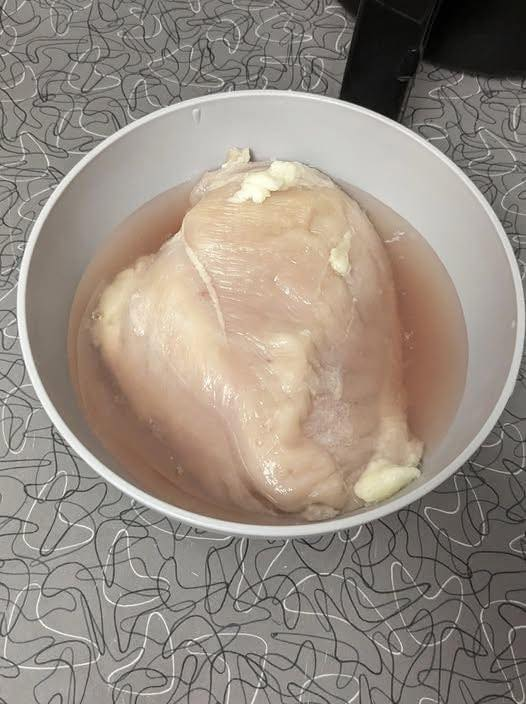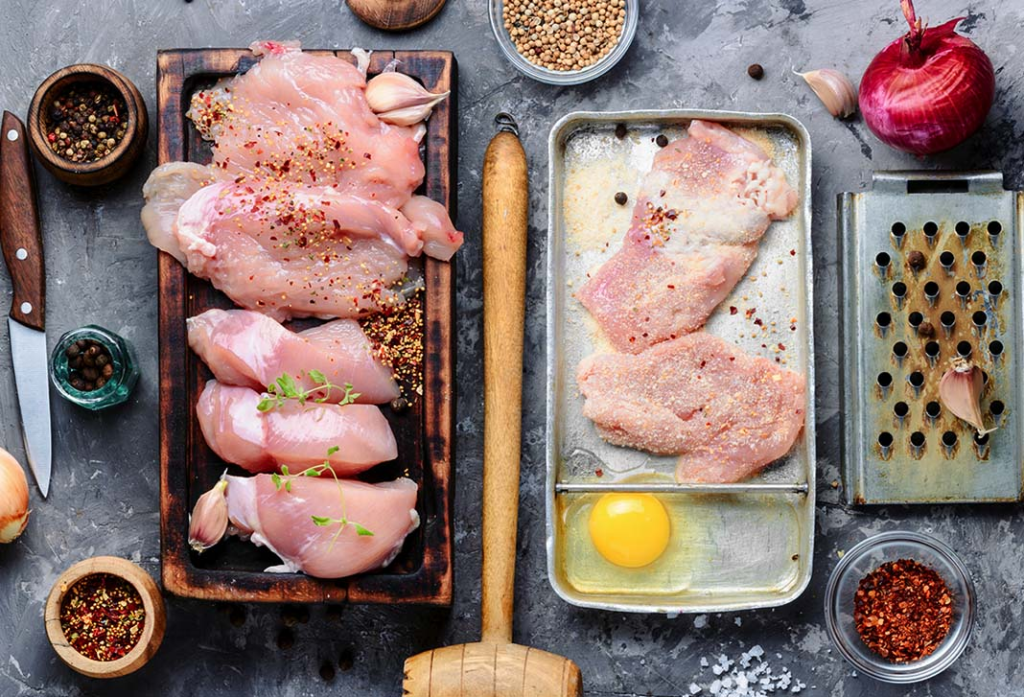We’ve all had that moment. You walk into the kitchen, eyes half-shut, stomach grumbling, and there it is—last night’s juicy chicken or savory beef dish sitting right on the counter. It smells fine, looks good, and you’re tempted. But then that little voice in your head whispers, “Is it safe?” Let’s settle the debate once and for all.

Understanding the Food Safety “Danger Zone”
One of the first things to know about leaving food out is a little term called the “danger zone”—no, not the Top Gun kind. The real food safety danger zone sits between 40°F and 140°F (4°C to 60°C). Within this range, bacteria thrive and multiply like crazy—every 20 minutes, the number of bacteria can double.
So, if that chicken or beef has been sitting out for more than two hours (yep, just two), it may be crawling with bacteria even though it looks perfectly normal. Unfortunately, you can’t see or smell this kind of danger.
Video: Can I leave cooked chicken out overnight?
Chicken: The High-Risk Offender
Chicken is one of the riskiest meats when it comes to food safety. Why? Because it’s particularly prone to bacteria like Salmonella and Campylobacter. These guys don’t mess around—they can cause nausea, vomiting, stomach cramps, fever, and worse.
Once cooked chicken hits room temperature and stays there for more than two hours, it becomes a breeding ground for bacteria. Leave it overnight? That’s a solid eight hours or more in the perfect climate for contamination. At that point, even reheating it won’t guarantee safety because certain bacterial toxins can survive heat.
Beef: Slightly Safer, But Still Risky

Beef tends to be a bit more forgiving than chicken, especially if it’s a steak that was cooked medium or well-done. However, don’t let that give you a false sense of security. Ground beef, for example, is just as vulnerable because bacteria from the surface gets mixed throughout the meat.
Leaving cooked beef out overnight is still not a great idea. The same rules apply—after two hours in the danger zone, the risk of foodborne illness rises dramatically.
But What If It Was Covered?
You might think, “Hey, the meat was covered, so it should be fine, right?” Sadly, no. While covering food might keep bugs and dust out, it doesn’t stop bacterial growth. Temperature is the true villain here, not exposure to air.
Even if the beef was wrapped in foil or the chicken was in a sealed container, the room temperature still provided a cozy environment for microbes to multiply unchecked.
Reheating Doesn’t Always Solve the Problem
Video: Cooked Chicken Left Out Overnight – Still Safe to Eat?
Some folks believe they can nuke leftovers back to safety in the microwave. While it’s true that high temperatures can kill many types of bacteria, they can’t erase toxins that those bacteria may have already left behind. Heating spoiled food might mask the issue temporarily—but the real danger often lies in what you can’t see.
So yes, even piping-hot leftovers can make you sick if they weren’t stored properly to begin with.
How to Handle Leftovers Like a Pro
If you want to keep leftovers safe to eat, here are some quick tips:
- Cool quickly: Don’t leave meat out after cooking. Store it in the fridge within two hours (or one hour if the room is particularly warm—above 90°F/32°C).
- Use airtight containers: These help slow down spoilage and maintain quality.
- Label and date: So you know how long something’s been in the fridge. No more guessing games!
- Eat within 3–4 days: Don’t push your luck. If in doubt, toss it out.
Signs That Meat’s Gone Bad—Even If It Looks Fine

Sometimes, meat might not smell funky or look off, but that doesn’t mean it’s safe. Still, here are a few warning signs to watch for:
- Slimy or sticky surface
- Sour or unusual smell
- Change in color (grayish or greenish tinge)
- Bubbling or foaming in sauces
If you spot any of these, the trash can is your best friend. Don’t gamble with your gut.
The Golden Rule: When In Doubt, Throw It Out
No one wants to waste food, but risking food poisoning is far worse. Trust your gut—figuratively, before it turns into a literal stomach ache.
You might lose a meal, but you’ll avoid hours (or days) of cramps, chills, and toilet time.
Conclusion: Better Safe Than Sick
So, can you eat chicken or beef left out overnight? Short answer: no. Long answer: absolutely not. While it may seem harmless, the risk isn’t worth it. The bacteria that can grow in meat left at room temperature are invisible and powerful—capable of ruining your day and putting your health at risk.
When handling leftovers, timing and temperature are everything. So next time you leave food out, just remember: your refrigerator isn’t just a storage unit—it’s your first line of defense against foodborne illness.
Next time, pack up that chicken or beef before you settle in for the night. Your stomach will thank you in the morning.


